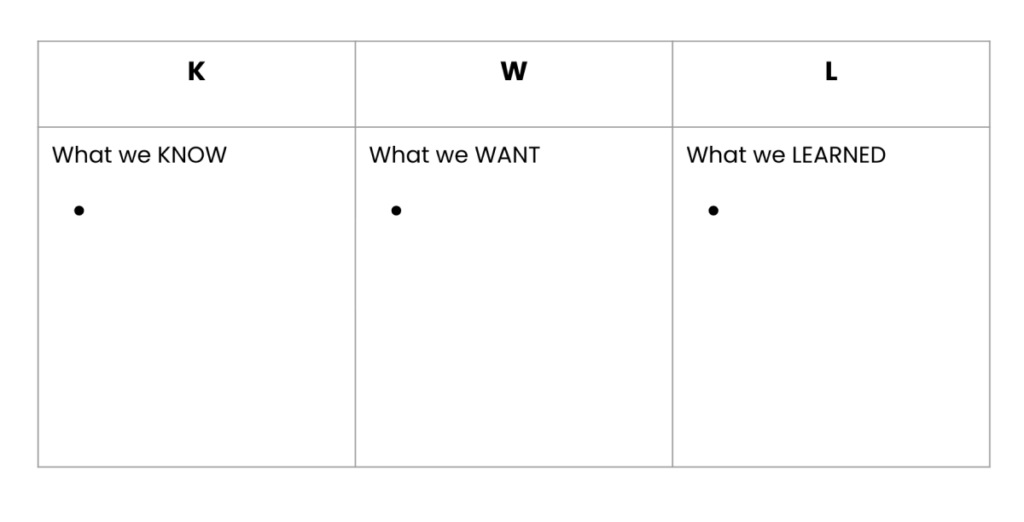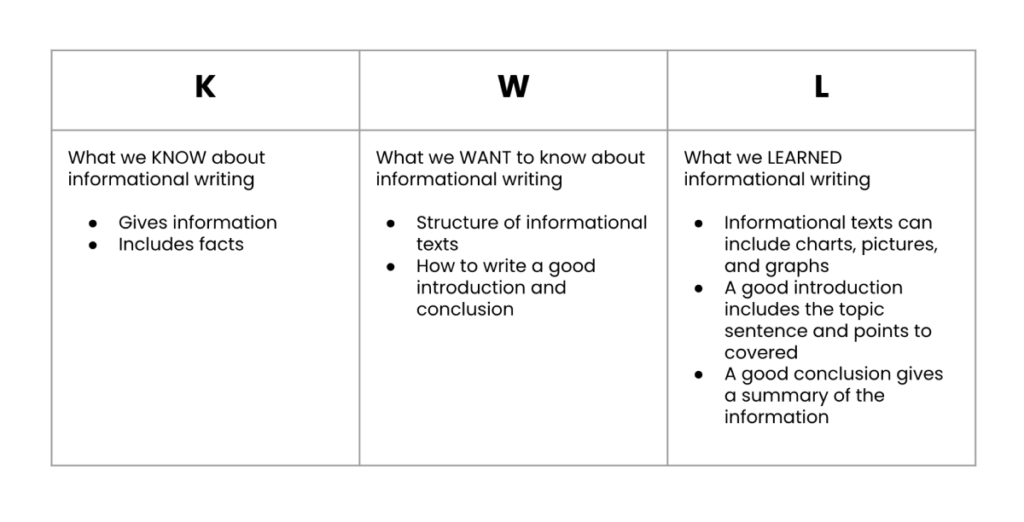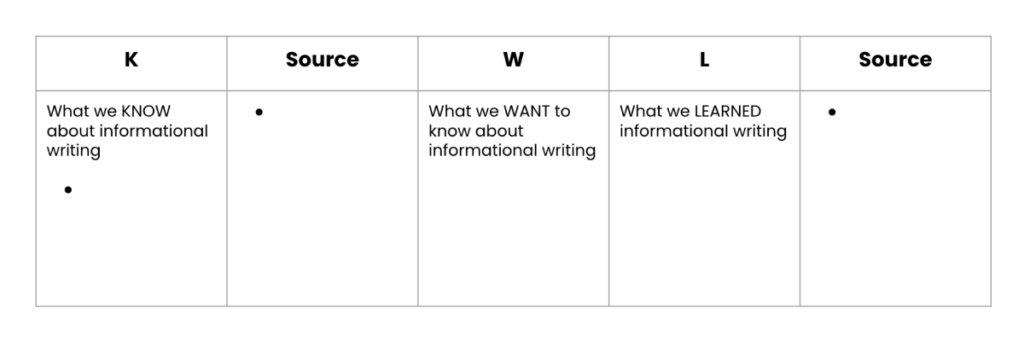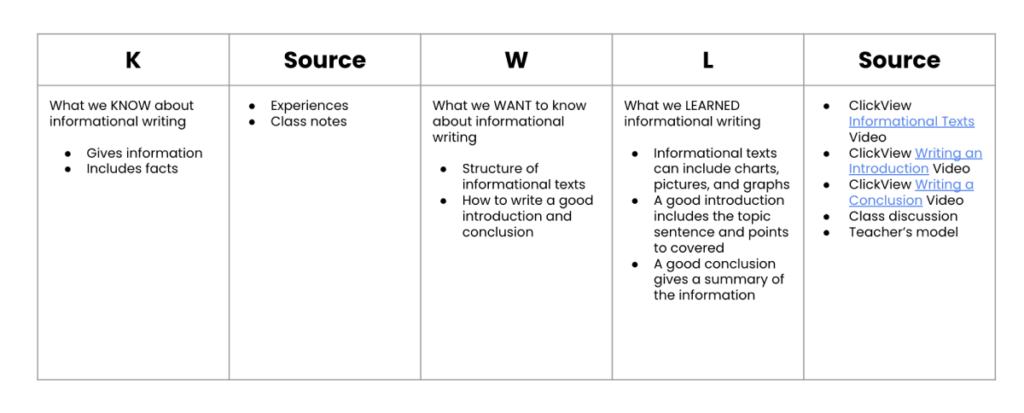Making use of scaffolding strategies in the classroom
In this guide
What is scaffolding in the classroom?
Scaffolding is an “instructional practice where a teacher gradually removes guidance and support as students learn and become more competent” (University of Buffalo).
Scaffolding is how educators support learning for all students. In today’s diverse classroom, students at all levels need strategies and support to help them succeed. As educators, it is our duty to provide those supports.
Scaffolding helps students by “providing a tool, or structure” by which they access information. It is specific strategies and tools that help a student to access the learning that they may not otherwise be able to access.
Why is it important and what are the benefits?
Scaffolding is important because all students deserve access to quality instruction and materials.
Students that are language learners or with specific learning needs can greatly benefit from scaffolding.
When determining scaffolding needs for students, the zone of proximal development must be considered. The zone of proximal development is “the range of tasks a person can’t complete independently but can accomplish with support” (SimplyPsychology, 2024).
The zone of proximal development is where scaffolding comes into the picture. These strategies are how a teacher can push students to accomplish more learning that may be just above the students’ level, no matter what that level might be.
Not every student has the same zone of proximal development. Your students that are language learners may need different scaffolding techniques than students that are native speakers. Students that have learning differences may need different scaffolding techniques – and they may not all be the same!
Examples of classroom scaffolding techniques
What strategy we choose to use as teachers depends on what our students need when they are learning. Students do not all struggle with the same concept at the same time of course which is what makes scaffolding so important.
We can use the scaffolding techniques below to address different needs at different times. These strategies can be combined, reused, and modified to fit the needs of your students.
1) Chunking
One of the defining characteristics of scaffolding is chunking or segmenting information. Chunking is when a teacher breaks the lesson information into smaller parts. Chunking makes it easier for students to process complex information.
The University of Massachusetts Amherst gives two suggestions when it comes to chunking materials:
- “Chunk out foundational concepts, then chunk out more complex concepts.” This gives students the ability to better comprehend the more complex materials.
For example, when teaching students about constructing sentences, first teach the concept of simple sentences and then how to write more complex sentences.
- Along with chunking learning, teachers should give “students opportunities to engage actively with the chunks”. Providing opportunities for students to apply what they have learned is pivotal to successful retention.
These opportunities could include a writing or an oral response to a text, practicing a math problem with the specific skill learned, or answering a question with a partner. The possibilities are numerous.

2) Formative assessment
Formative assessments are any assessment where the data collected is used to inform instruction and learning opportunities. The data may be used by teachers to design small groups or to drive their lesson planning process in the future.
can also be used by the students that took the assessment. They can use this information to take ownership of their learning. Formative assessment data is excellent for helping students to set learning goals.
Formative assessment is not just a tool or instrument, but is also the function that assessment data serves (Solution Tree Press, 2018). It is not only the assessment itself, but how we use the assessment data to inform our instruction that matters.
Formative assessment can help the teacher to identify the zone of proximal development for students. Understanding what students already know, have learned, or specifically where they are struggling is a huge benefit of formative assessment.
A specific way to use formative assessment in the classroom can be through exit tickets. An exit ticket is a short response that students must give as they “exit” the room or lesson. This can be done quickly on a notecard or sticky note. If students are not at a level that allows for written response, they can give an oral response that the teacher takes note of and records for data purposes.
Examples of exit ticket subject specific questions could be:
- What is the difference between mass and weight?
- How are nouns and pronouns similar/different?
- How can you use persuasive/argumentative writing in your life?
- Explain how to do a math problem from today. (The teacher would include the math problem for students.)
Another way to use exit tickets is to gauge student general understanding.
Examples of this sort of exit ticket could be:
- What was the most important part of today’s lesson?
- How can you apply what you learned in this lesson to other lessons?
- What is one thing you would like me to explain more clearly?
These exit tickets can then be used in several ways by the teacher – grouping students for reteaching or an activity, knowing which students need reteaching or reinforcement, or which students might need enrichment.
In my own classroom I have used exit tickets as an assessment tool. The information is used to guide my reteaching decisions. If, for example, 5 students are not able to correctly respond to their exit ticket, those students would be in a small group for reteaching. This reteaching would occur during my next available small group time to insure that students are not missing vital information.
3) Modeling
Modeling is when “the teacher engages students by showing them how to perform a skill while describing each step with a rationale. This provides students with both a visual and verbal example of what they will be expected to do” (University of Louisville).
It is not just showing students what to do, but it also includes describing what you are doing and why. Modeling is similar to Think Alouds, but modeling involves showing students what the expectation is for their work.
Students respond better when they know the expectations. Giving students a model of how to do the work and then showing them what the product should look like allows for greater success and less frustration.
Every educator has an example of a time they gave instructions (verbally or written) and the students did not understand the assignment based on those instructions. Either something was not clear, the directions were vague, or we did not outline our expectations. We wanted one sort of response, but we got a completely different one.
Modeling helps to alleviate that frustrating incident. Students know what they are being asked to do and how they should do it.
4) Visuals
Using visuals and graphics to support learning is a technique that often gets overlooked, especially in upper grades. We think we can just use words to explain and describe.
However, visuals, or visual scaffolding, can provide excellent scaffolding support. While this scaffolding technique does require planning and intentionality, today’s easy access to the internet allows educators to access any number of appropriate visuals.
A personal example of how visuals could have supported understanding comes from my own education. In my high school geometry class the teacher told us to find the volume of a tank.
I grew up on a military base and moved to Texas in the 8th grade. For me, a tank is a military vehicle, but in Texas it is a pond used for providing water to cattle (also called a stock tank).
I spent the entire discussion time confused as to why you would fill a tank with water! I finally just had to ask which is not something struggling students often will do. Had the teacher used a picture/drawing that might have alleviated some of my anxiety as a student.
As an English learner teacher for many years, the use of visuals, graphics, and pictures was a huge part of my scaffolding toolbox. These visuals helped students to understand academic vocabulary, everyday vocabulary, and directions.
However, we must be intentional with our use of visuals. We do not need just a fun picture, but we must choose visuals that enhance student understanding.
For example, students in primary grades that are learning about their community in social studies would benefit from pictures from the community they live within. The fire station they all pass on the way to school, the grocery store their parents shop at, or the movie theater they go to on the weekends are all possible examples.
At one point in my career I taught Texas History. The Alamo is a very well known part of Texas history. During a visit to San Antonio, I toured the Alamo and took pictures to show to my students. This helped them to see the connection between what the fort looks like now and what it looks like in the drawings in the text.
5) Think alouds
Often students do not understand a process or the purpose for a teacher’s instruction. The first process that comes to mind is the writing process.
Teachers often demonstrate the writing process for students, but just creating a sentence or paragraph in front of students does not necessarily translate to students learning how to write.
A think alouds activity allows the teacher to narrate their thinking. During a think aloud, the teacher explains what they are thinking when completing a task or process.
This ClickView video gives an excellent example of what a think aloud could look like in a classroom.
Why the teacher is doing something is often a mystery to students. Explaining our thinking, helps them to better understand processes such as the writing process and the reading process. Students will begin to internalize thinking so they can apply this knowledge to other tasks.
6) Activate prior learning
“Activating prior knowledge helps students see the connections between previous learning and new instruction, builds on what students already know, provides a framework for learners to better understand new information, and gives instructors formative assessment information to adapt instruction” (Virginia Tech).
When we activate students’ prior knowledge, they begin to form connections within their learning. As instructors, we also have a source of formative assessment that we can use to shape our instruction.
An easy way to activate prior knowledge and help students form connections between learning and instruction is through a KWL chart. A KWL chart has three sections – K (what we know), W (what we want to know), and L (what we learned).
The chart examples below are adapted from the book 50 Strategies for Teaching English Language Learners by Adrienne L. Herrell and Michael Jordan.

Example of a completed KWL:

A variation of a KWL is the KWL Plus chart. This type of chart includes extra columns that include sources for what is known and what was learned. This would be a great resource for older students to begin identifying sources and where their information comes from as they learn how to conduct research.

Example of a completed KWL Plus Chart:

In the diverse classrooms of today, teachers must make instructional decisions that can address each student’s needs. Scaffolding strategies can be used to support learning for any student.
Sources
- Herrell, A., and Michael, J., (2012). 50 Strategies for Teaching English Language Learners Fourth Edition, Pearson.
- Solution Tree Press. The handbook of Embedded formative assessment. 2018. Solution Tree Press.
- University of Buffalo. (no date). Scaffolding Through Design. Accessed date: April 8, 2024. https://www.buffalo.edu/catt/teach/develop/build/scaffolding.html
- University of Louisville. (no date). Modeling: Elementary School. Accessed April 11, 2024. https://louisville.edu/education/abri/primarylevel/modeling/elementary
- University of Massachusetts Amherst. (no date). How do I Chunk Content to Increase Learning? Accessed April 11, 2024. https://www.umass.edu/ctl/resources/how-do-i/how-do-i-chunk-content-increase-learning
- Virginia Tech. (no date). Activating Prior Knowledge. Accessed April 11, 2024. https://teaching.vt.edu/teachingresources/adjustinginstruction/priorknowledge.html
ClickView professional development videos

Mattie Farrer
briefcase iconAVID Site Coordinator / Content Curator
Mattie Farrer has been an educator in various grade levels and capacities during her career. She has a passion for supporting English learners and their language development. She also loves helping teachers reach all students.
Other posts
Want more content like this?
Subscribe for blog updates, monthly video releases, trending topics, and exclusive content delivered straight to your inbox.










